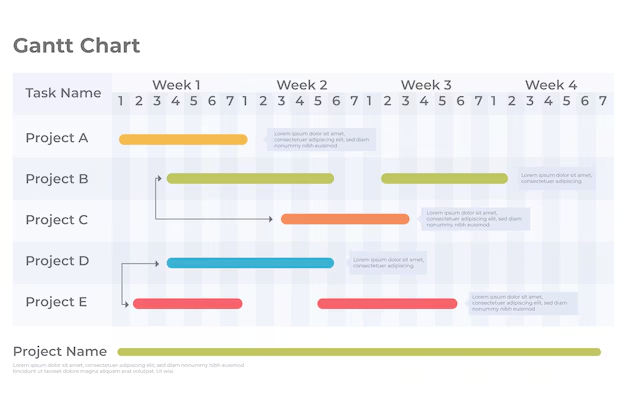Appendices
Table of Contents

APPENDICES
These are supplementary documents providing detailed information that supports your research. They offer professionals deeper insights into your research methods and data analysis processes.
An appendix is a section dedicated to supplementary materials. This content, while not crucial for the main text, enhances the reader’s comprehension of the research problem. It can also house detailed information that would disrupt the flow if placed directly in the main body.
Appendices are placed after the reference list. In research proposals, the reference list typically follows the methodology chapter (Chapter Three). In research reports, it usually follows Chapter Five.
Each appendix should be clearly labeled (e.g., Appendix A, Appendix B, Appendix C). To refer to an appendix in your main text, use parentheses at the end of a sentence, such as “(see Appendix A)”. For instance: Dansons et al. (2012) examined studies involving international bank staff and university students, building upon email limitations (see Appendix B for participant demographics).
Examples of Appendix Contents:
Appendices can include various supporting documents, such as:
Consent Forms
Data Collection Instruments (Questionnaires, Checklists)
Detailed Tables (e.g., sample size determination tables) that are referenced but placed in the appendix for conciseness in the main body.
Lists of participating locations (hospitals, districts, villages)
Study Area Maps
Research Budget Breakdown
Research Timeline or Work Schedule
Official Authorization Letters (signed and stamped)
Appendix Labeling Example:
APPENDICES
Appendix I: Consent Form
Appendix II: Research Work Plan
Appendix III: Detailed Budget for Research
Appendix IV: Participant Questionnaire
Appendix V: Sample Size Justification
Consent form
A consent form serves as documented evidence that the informed consent process has been completed. Informed consent is defined as the voluntary agreement given by a participant to take part in research, after being fully informed about the potential consequences, risks, and benefits of their involvement. It signifies their knowledgeable permission to participate.
Research ethics prioritize participant autonomy. This is upheld by ensuring informed consent is obtained. Legally, individuals aged 18 and above are typically considered capable of providing formal consent.
For participants under 18 years old (especially those younger than 15), ‘assent’ is sought to indicate their willingness to participate. In addition, formal consent is obtained from a parent, legal guardian, or institutional authority as a witness to the process and agreement. The informed consent process includes explaining the study in clear, understandable language to the prospective participant, ensuring they grasp the purpose and nature of the research.
Participants must have the freedom to choose whether or not to participate without any pressure or coercion. Participation must be entirely voluntary.
Key Components of a Consent Form:
Introduction: Begin by introducing yourself, including your name, affiliation, and profession.
Study Purpose: Clearly state the research topic and explain the rationale behind the study.
Benefits and Risks: Honestly outline any potential benefits or risks associated with participation.
Ethical Assurances: Include statements guaranteeing ethical considerations such as data confidentiality, and the participant’s right to withdraw from the study at any point.
Consent Statement: Provide a statement where the participant acknowledges that the study has been explained to them, they understand it, and they voluntarily agree to participate. The participant then signs (signature, not name) to indicate their consent.
Other possible sections may be included depending on specific guidelines
Statement of Introduction: Introduce yourself to the participant, including your name, address, and profession.
Purpose of the Study: Clearly state your research topic and explain why you are studying it.
Benefits and Risks: Describe any potential benefits or risks of participating in the study, being honest about what to expect.
Ethical Considerations: Assure the participant about confidentiality of information and their freedom to withdraw from the study at any time.
Statement of Consent: Include a section where the participant acknowledges that the study has been explained to them and that they understand it. The participant signs this document (without putting their name).
Voluntary Participation: Clearly state that participation is voluntary, and the participant can withdraw without any penalties.
Confidentiality Protection: Explain the measures taken to protect the participant’s confidentiality.
Participant Questions: Allow participants to ask questions about the study and provide answers to ensure their understanding.
Consent Form Copy: Assure participants that they will receive a copy of the signed and dated consent form.
Researchers’ Information: Provide the names and contact details of the investigator(s) for any follow-up questions or concerns.
Informed Consent Statement: Emphasize the importance of informed consent and that it has been obtained from the participant.
Participant Rights: Explain the rights participants have during and after the study, including access to their data.
Signature Lines: Designate spaces for the participant’s and researcher’s signatures.
Date: Include a space for the date when the consent form is signed.
Research timetable/workplan
A timetable for your research is a straightforward and economical method to effectively manage your research time. It empowers you to gain better control over your schedule.
It offers a clear overview of the tasks that need to be completed and the available time for their execution. Creating a personalized research timetable is a valuable strategy for enhancing organization and fostering motivation to maximize your productivity and achieve your research objectives.
Within the realm of research, this structured schedule is commonly known as a work plan.
The Gantt Chart
What is a Gantt Chart?
The Gantt Chart is a visual project management tool. It graphically represents the sequence of tasks required for project completion, displaying the order in which activities should be carried out and the timeframe allocated to each.

Diploma in Midwifery
Get in Touch
(+256) 790 036 252
(+256) 748 324 644
Info@nursesonlinediscussion.com
Kampala ,Uganda
© 2025 Nurses online discussion. All Rights Reserved Design & Developed by Opensigma.co

